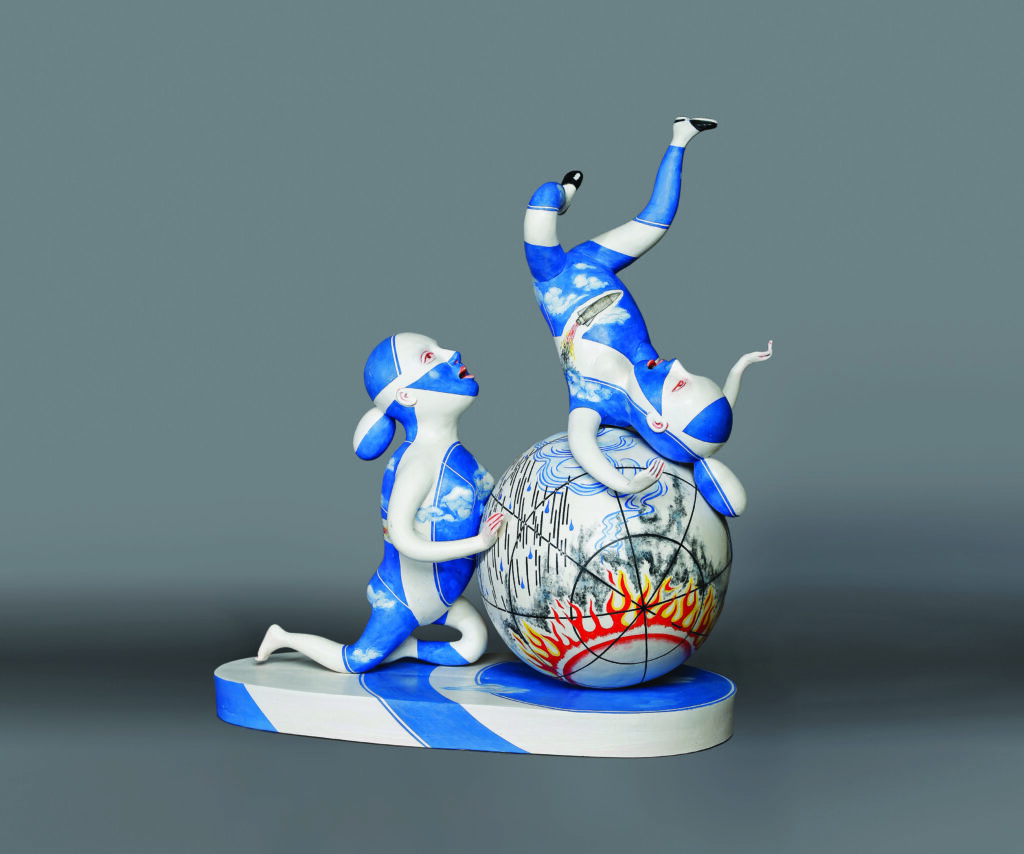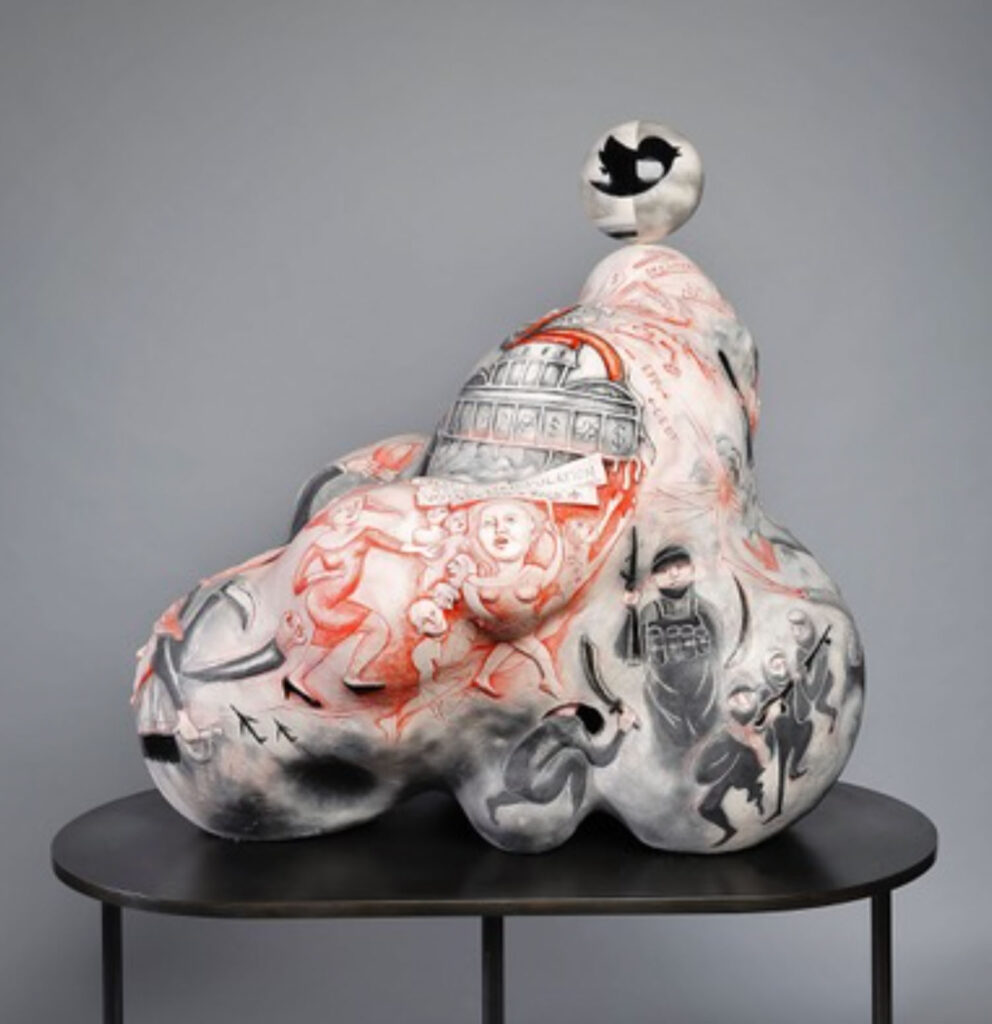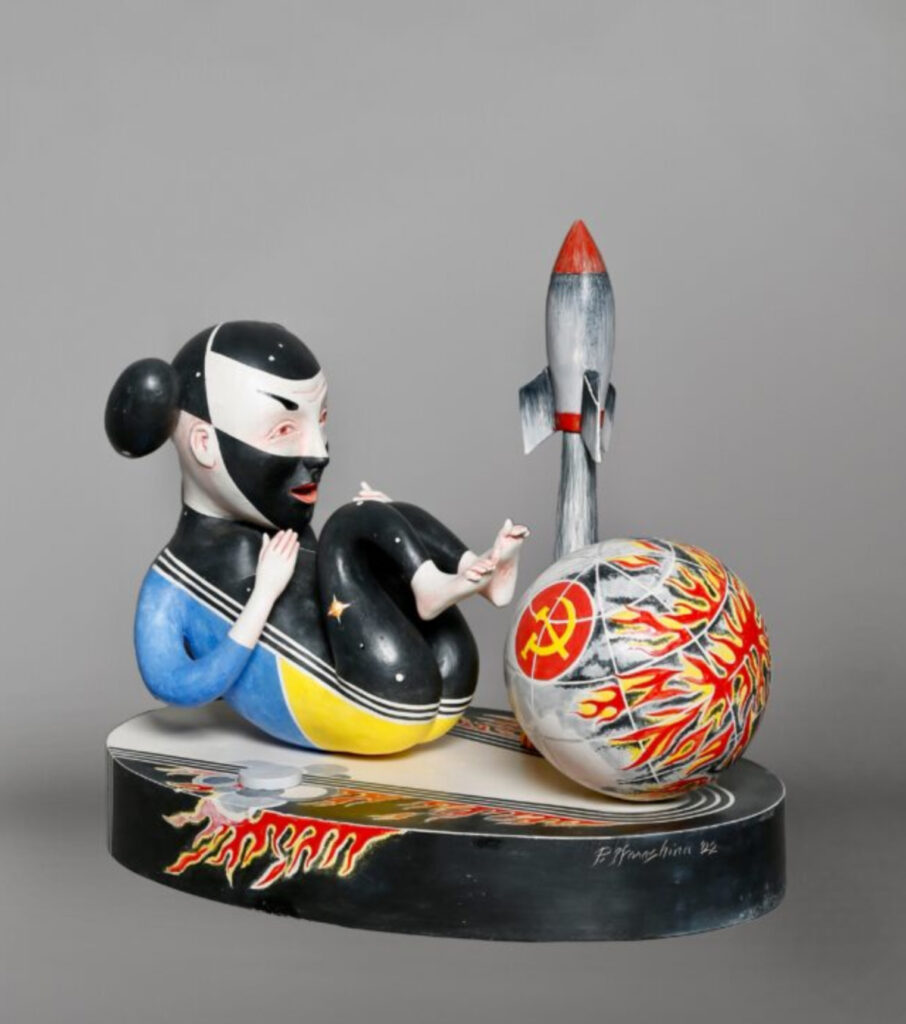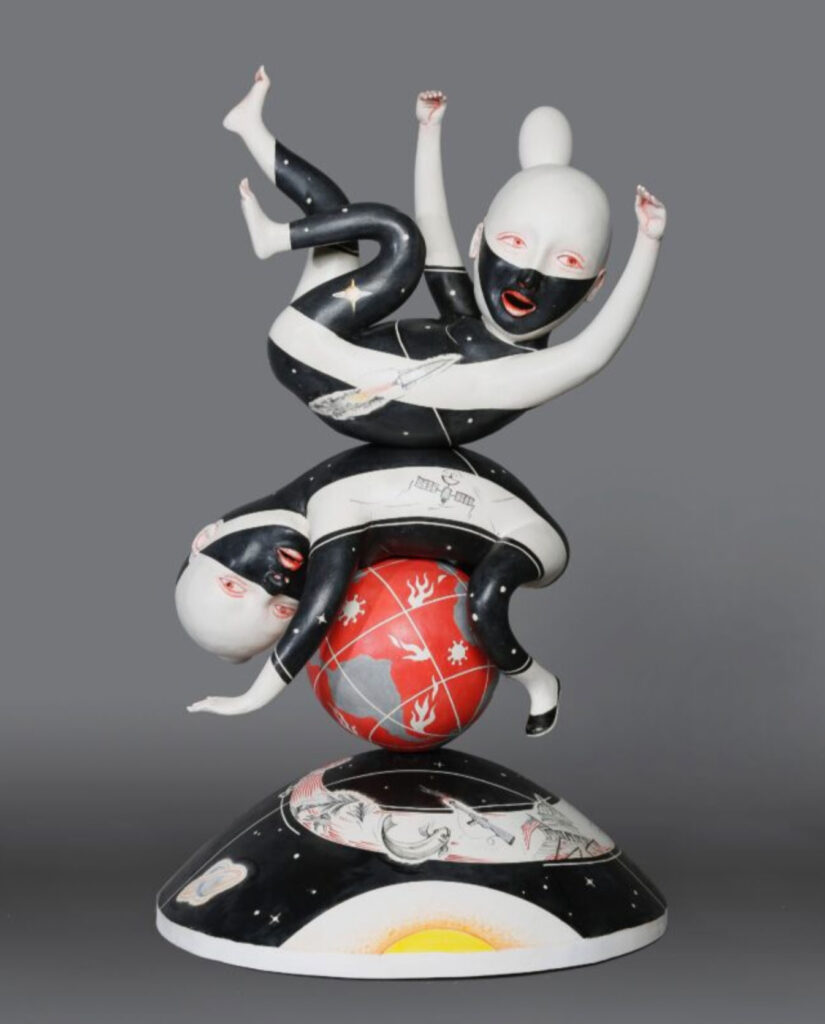

PATTI WARASHINA: My ideas over the years, seem to be involved in what is happening around me. I think of my work as a “visual diary.” I read two newspapers every day and the news channels are constantly on while I work in my studio as it is difficult to watch movies, which demands focusing on the screen.
Three years ago, when the pandemic was in full swing, it seemed as though the world was in constant turmoil (ie. politics, covid, environment, war, homelessness, etc.). The title World Upside Down seemed appropriate to describe the work which represents all my concerns and reflections.

Societal, political, and environmental issues are expressed in my work. Because of the horrifying issues that society is facing, I try to present these problems in my art, by drawing the viewer to the work through visual color and stylized abstraction, using identifiable characters and objects that the viewer can relate to in their own world. After a second glance, the meaning of these objects and characters becomes more apparent to the viewer and is open to personal interpretation.
The way I convey these societal ills in my art helps to protect me psychologically from the issues and be able to address these horrifying conditions through the way that I portray them.
The pandemic has greatly affected my art and is a big subject of much of it. The issues I portray are connected to the human condition and to our political division, war, environmental destruction, and women’s issues.
IJ:The treatment of your figures is stylized and sculpted in such an animated way that, albeit the forms are static, there’s movement and dynamism exuding from your work. You note how your figures represent the human consciousness, can you elaborate on this?
The stylized human figures represent "human consciousness” and are floating above the earth’s sphere, or hemispheres, that represent the “world” or planet on which we live. To me, these floating figures represent beings observing the conditions of society or what is happening on the earth below.
Like many of us who are clay artists, the tactile seduction of the material was the initial attraction to this versatile material. Its "chameleon-like" character can be made to look like almost any other building material (i.e. metal, wood, paper, vegetation, etc.)
Initially, I was also attracted to “conquering” wheel-thrown objects, and the curiosity of completing this clay form by the myriad, unique, and endless techniques from glazed surfaces, that the ‘fire” could perform. Clay also lends itself not only to the 3-dimensional form but also adds another dimension to 2-D surface compositions as well.
Yes, I have seen a dramatic shift in the versatility of the clay art medium since I first started, as our communication of the craft has exploded worldwide, and the transfer of ideas and talent is boundless.
Sure, they are part of society's conflicts, and for me, thought-provoking subject matter. Perhaps because of the abstractions of the figurative elements, one might think of these pieces as 3-dimensional political cartoons.


The political, national, and international polarization, as well as the horrific problems that encompass our earth and societies, is ugly and difficult to comprehend as well as visually unattractive to view. I tend to interpret the ugliness in a manner that captures the viewer by composition, modifying subject matter, and approaching the surface in a bold, graphic way. Once captured, the viewer will start to see the details of the subject that can be personally interpreted. Hopefully, this makes the subject matter approachable and visually digestible.

